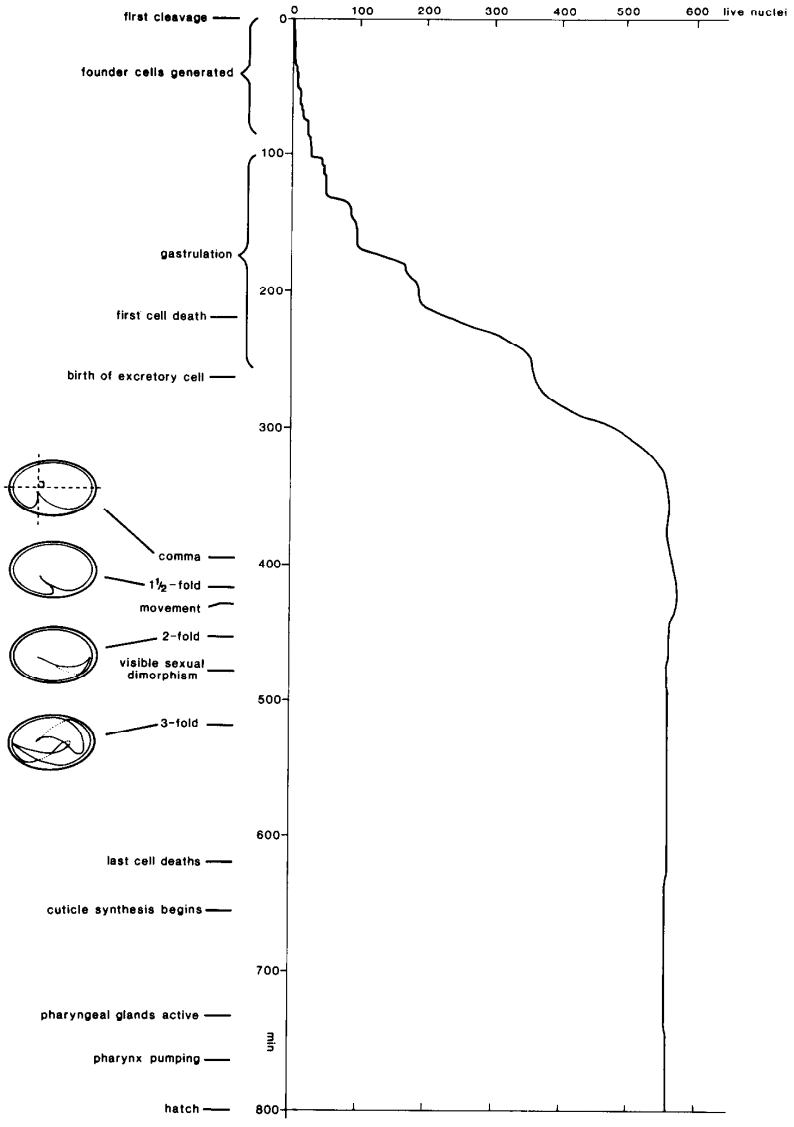I'm a high school student planning to write a math essay to model changes in the number of cells in a living organism over time. C. elegans is the only organism that I know with a known number and lineage of cells. I found the full lineage of cells in C. elegans here, which is plotted in respect of time. However, counting the number of cells in those diagrams is impractical. So, is there a summarized database for the number of cells in each hour in the life of C. elegans?
1 Answer
The lineages provided at WormAtlas include references to the original publications. Concerning the embryonic lineage at the top of the page, the corresponding paper was published in 1983.1 Looking at that publication, we see that the authors provide a summary figure depicting nuclei counts over the course of 800 minutes, from the first embryonic cleavage until hatching:
FIG. 4. Marker events and count of living nuclei during embryogenesis. Fertilisation is normally at -50 min. Note that the comma stage is defined in a precise way, as the moment at which the ventral surface of the tail lies perpendicular to the long axis of the egg.
Post-embryonic nuclei counts for young worms and adults are given in Tables 2 and 3 of a 1977 publication by the same first author.2 I can find no data on hour-by-hour cell counts over the interval of an adult worm's lifetime, though such a dataset might be out there.
References
- Sulston JE, Schierenberg E, White JG, Thomson JN. The embryonic cell lineage of the nematode Caenorhabditis elegans. Dev Biol. 1983 Nov;100(1):64-119.
- Sulston JE, Horvitz HR. Post-embryonic cell lineages of the nematode, Caenorhabditis elegans. Dev Biol. 1977 Mar;56(1):110-56.

